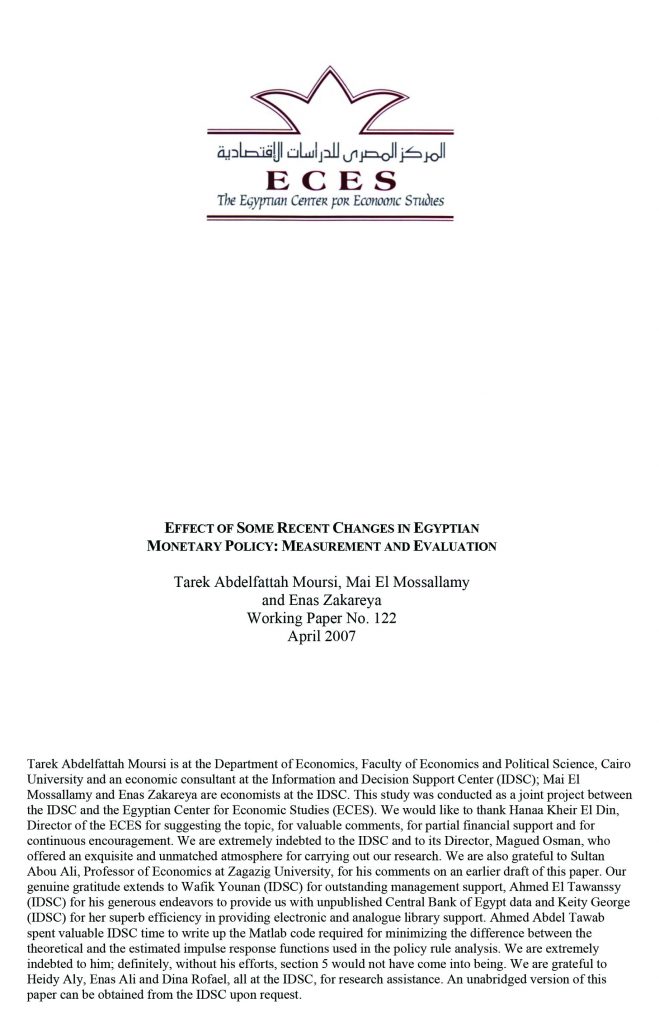Abstract:
The paper focuses on examining the salient features and developments in the structure of monetary policy and on describing their implications for the Egyptian economy mainly during the period 1990 through 2005. The analysis is based on a set of policy oriented models that measure the stance of monetary policy and evaluate the responses of key policy (total and non-borrowed reserves and the interest rate) and non- policy (commodity prices, GDP deflator and real output) variables to policy shocks. The analysis also sheds light on the prospects for policymaking by a policy rule in lieu of the current discretionary monetary decision making regime. Accordingly, we examine whether the current discretionary policymaking process may have resulted in rule[1]like decisions via estimating a variant of the Taylor-type interest rate feedback rule à la Rotemberg and Woodford (1998). The results show that recently monetary policy shocks virtually had no real effect on output thereby providing evidence in support of the long-run neutrality of money. We conclude that the effect of monetary policy on the level and on the growth rate of real output in the long run is limited by its capacity to achieve long-run price stability. Moreover, we argue in favor of implementing the constrained discretion framework as a basis for monetary policymaking in Egypt. That framework is consistent with the inflation[1]targeting approach, which the Central Bank of Egypt (CBE) is currently considering to adopt as the monetary policy objective. Employing an estimated interest rate targeting rule, historical and counterfactual policy simulations indicate that during 2001-2006, the CBE has given precedence to reducing the interest rate variance rather than to the stabilization of inflation. Simulation scenarios suggest that it is possible to stabilize inflation via policy intervention measures.

